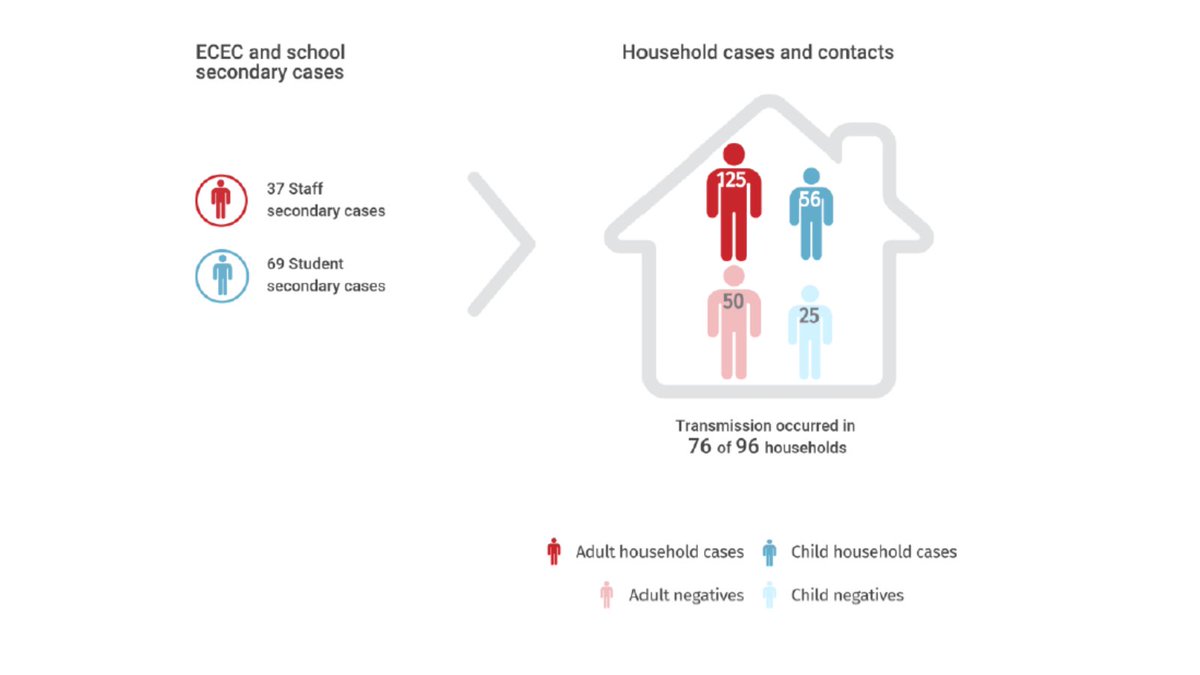
Because England has excellent population data on #COVID19, we can make pretty accurate estimates of risk to children 🧵
Fortunately, these risks are extremely low
1/
Fortunately, these risks are extremely low
1/
Note when possible that we want to know rates *per infection*, not per positive test
This is because tests are contingent on how much you test, which is different across time and places
Risks per infection are much less changeable, and what we really care about
2/
This is because tests are contingent on how much you test, which is different across time and places
Risks per infection are much less changeable, and what we really care about
2/
Let's take the first 12 months of the pandemic up until Feb 28th 2021
Estimates based on seroprevalence are around 25% children <18 were infected by this point (16+ was >30%, younger will be a bit lower)
There are 12mil children in England, so this is 3mil infections
3/
Estimates based on seroprevalence are around 25% children <18 were infected by this point (16+ was >30%, younger will be a bit lower)
There are 12mil children in England, so this is 3mil infections
3/
By that point there were 5000 admissions <18
We know from ISARIC data at least 20% of these were incidental positive tests, so max 4000 admissions due to COVID-19
That's a hospitalisation : infection ratio of 1 :750
4/
We know from ISARIC data at least 20% of these were incidental positive tests, so max 4000 admissions due to COVID-19
That's a hospitalisation : infection ratio of 1 :750
4/
By that time there were 61 deaths with a positive test
Of these, only 25 were caused by COVID-19
That's a death : infection ratio of 1 : 120,000
5/
Of these, only 25 were caused by COVID-19
That's a death : infection ratio of 1 : 120,000
5/
As there is no definition for "long covid" in children, the best we can do is estimate relative risk from the CLoCK study of having 3 or more symptoms 12w after a COVID-19 test
30% if tested positive, 16% if tested negative
RR=1.8 if positive for SARS-CoV-2
6/
30% if tested positive, 16% if tested negative
RR=1.8 if positive for SARS-CoV-2
6/
Approximate risks to children from SARS-CoV-2 infection summary:
Hospitalisation: 1 in 750
Death: 1 in 120,000
Test +ve for SARS-CoV-2, symptoms at 12w RR=1.8
7/
Hospitalisation: 1 in 750
Death: 1 in 120,000
Test +ve for SARS-CoV-2, symptoms at 12w RR=1.8
7/
References:
researchsquare.com/article/rs-689…
coronavirus.data.gov.uk/details/downlo…
ons.gov.uk/peoplepopulati…
researchsquare.com/article/rs-798…
8/
researchsquare.com/article/rs-689…
coronavirus.data.gov.uk/details/downlo…
ons.gov.uk/peoplepopulati…
researchsquare.com/article/rs-798…
8/
• • •
Missing some Tweet in this thread? You can try to
force a refresh









